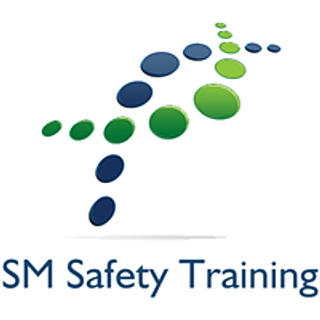Who Is Responsible for Workplace Health and Safety?
- steven mullan
- Sep 4, 2024
- 4 min read
Updated: Sep 19, 2024
Written by Steven Mullan 09/09/2024

Comprehensive Guide to Workplace Health and Safety: Who is Responsible?
Workplace health and safety are critical aspects of any business and are aimed at safeguarding employees, customers, and visitors from harm. A safe work environment protects individuals, boosts employee morale, preserves your brand’s reputation, and prevents costly legal liabilities.
However, implementing effective health and safety protocols is a shared responsibility, and understanding who is accountable can often be confusing. This guide will outline the roles of various personnel in workplace health and safety to clarify their duties.
Who is Responsible for Health and Safety in the Workplace?
Health and safety responsibility is not confined to a single person within a company. The Health and Safety Executive (HSE) mandates that responsibility is distributed among business owners, managers, supervisors, contractors, and employees. However, the extent of these responsibilities varies by role.
Health and Safety Responsibilities for Employers
Employers and business owners hold the largest share of responsibility when it comes to workplace health and safety. They are legally obligated to ensure the safety and well-being of employees, contractors, visitors, and customers. Here are the key duties employers must perform:
1. Conduct Risk Assessments
Employers must follow the standard five-step process to carry out risk assessments. This includes identifying hazards, evaluating risks, and implementing safety measures to mitigate them. Employers must also consider who could be at risk and take steps to protect them.
2. Consult Employees on Safety Issues
Consultation with employees is critical, as staff can provide insights into daily hazards that management may not notice. This collaboration is essential for creating effective safety policies.
3. Hire Competent Contractors
When contractors are employed for specific tasks, employers must ensure they possess the necessary skills and knowledge to complete work safely.
4. Develop and Communicate Health and Safety Policies
For businesses with more than five employees, written health and safety policies are a legal requirement. These documents must be communicated clearly throughout the organisation to ensure all employees are aware of the procedures.
5. Display Approved Health and Safety Posters
Employers must prominently display the approved health and safety poster in the workplace. This poster informs workers about their rights and responsibilities regarding workplace safety.
6. Provide Safety Equipment and PPE
Employers must supply safety equipment and personal protective equipment (PPE) free of charge, ensuring that staff have the necessary tools to perform tasks safely.
7. Offer Health and Safety Training
To ensure that employees understand the risks they face, employers are responsible for providing comprehensive health and safety training. This applies to both permanent staff and contractors.

Employee Health and Safety Responsibilities
While employers carry the bulk of the responsibility, employees also play a vital role in maintaining a safe work environment. According to the HSE, workers must take care of their own health and safety and that of others affected by their actions. Here are key duties employees must fulfil:
1. Follow Health and Safety Training
Employees are required to follow the safety training provided by their employer. Whether it’s about handling equipment or managing hazardous substances, employees must apply this training in their daily work.
2. Adhere to Health and Safety Policies
Beyond general training, employees must adhere to the specific safety procedures outlined in the company’s health and safety policies.
3. Stay Informed About Safety Updates
Employers should keep staff informed of any updates to health and safety policies. Employees, in turn, are responsible for staying up-to-date and implementing any changes.
4. Collaborate with Employers
Employees are expected to actively participate in safety discussions, offering feedback and insights to help improve workplace safety protocols.
5. Report Hazards and Inadequate Precautions
Employees should report any safety risks they encounter, such as malfunctioning equipment or ineffective safety measures, to management or senior staff.
Conclusion
Ensuring workplace health and safety is a shared responsibility that involves everyone from the business owner to entry-level staff. While employers are accountable for creating and enforcing safety policies, employees must actively participate in maintaining a safe environment by following procedures and reporting hazards. By promoting a safety culture, businesses can protect their employees, uphold their reputation, and avoid costly incidents.
Prioritising workplace health and safety not only fulfils legal obligations but also ensures the well-being of everyone involved in the business.
SM Safety Training & Consultancy can be a key partner in helping your businesse manage your health and safety responsibilities. With expert guidance and tailored training solutions, SM Safety ensures that employers, managers, and staff fully understand their roles and responsibilities within the health and safety framework. We can assist in the creation and implementation of comprehensive health and safety management systems, from conducting risk assessments to developing safety policies and training programs. By working with SM Safety, your business can ensure compliance with legal requirements while promoting a safer workplace environment, reducing risks, reducing costs and improving overall employee well-being. Contact us today and have a look at our
Compliance Packages





Comments